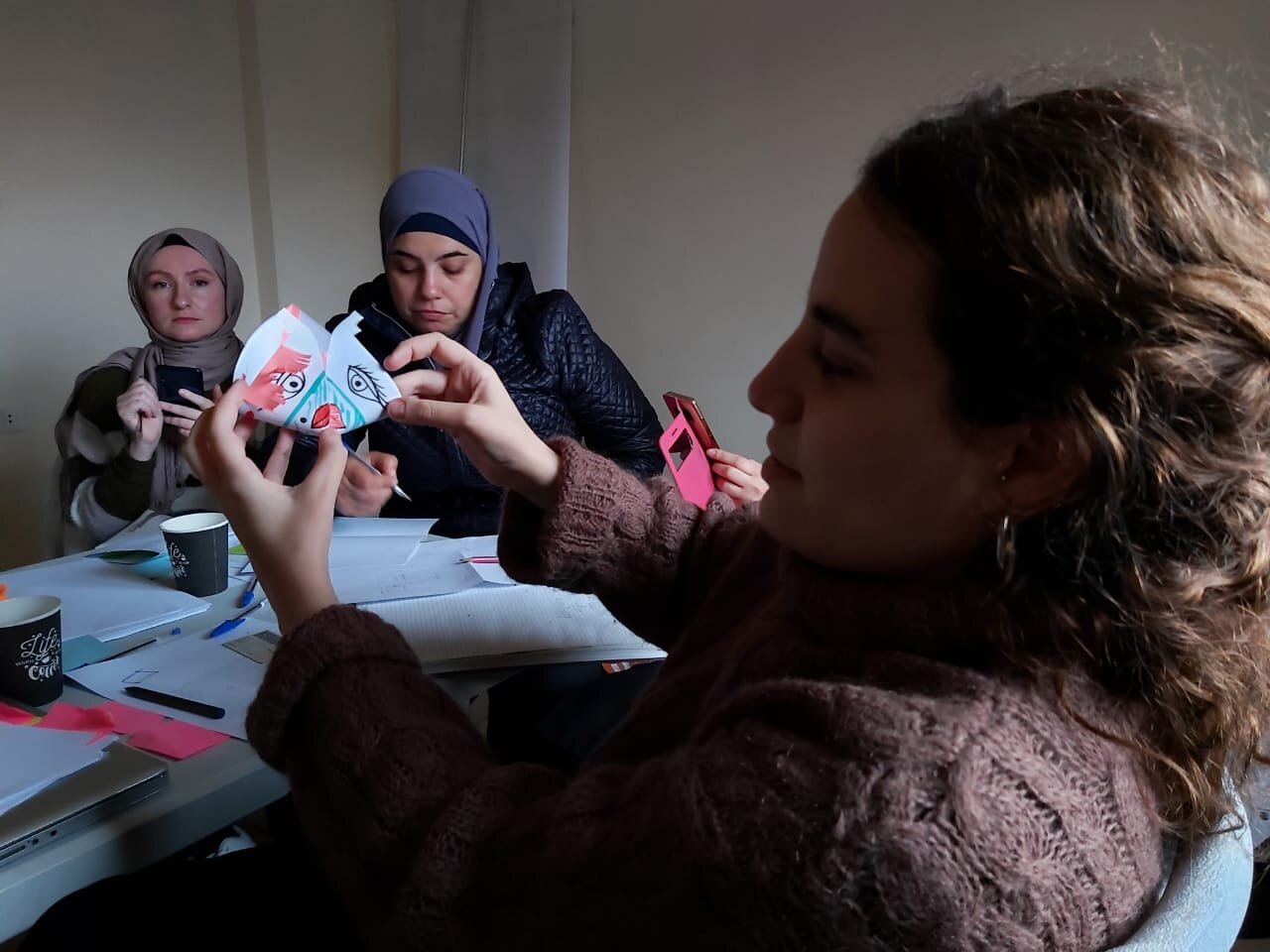Client | Strategic Service Designhivos
#social impact
Hivos is a development aid organization, headquartered in The Netherlands. Hivos provides financial support to organizations working in Africa, Latin America and Asia, it provides advocacy and it supports knowledge sharing in particular in the field of social change, digital activism and rural innovations.
Hivos works in 34 countries, they implement their programs together with 470 partner organizations & their budget in 2018 was over 53 million euros.I was approached for this project to train artisans on making more sellable crafts. Yet, what came out of this project was a database, a network , plans for a physical space and sustainable training solution model with the training center.
Project Details
Year // September 2019 until February 2020Role // Design Researcher & Strategist, Product Development TrainerOutput // Training Curriculum, Sustainability Model which includes database & physical storeProject Collaborators // Carlo Massoud (trainer) , Jennifer Haddad (project manager).ChallengeAs Lebanon suffers economic decline, the livelihood of hundreds of artisans is at risk. What sustainable & profitable strategy should we implement to support the affected?
We drove up from Beirut on a two-hour destination to Tripoli, past the houses chiseled in shelling and bullet holes from the gone-but-remembered civil war, past the cardboard signs of fruit vendors with their number 500 filled in with felt marker pens, past the acrobatic chickens on the tin roofs, past the stratum of hyper-stacked slippers, and eventually up main square towards the artisan training center.
Phase 1 - Understand
Focus Group with the artisans
It’s hard to paint an accurate picture of women in Tripoli. What this focus group made me personally realize that when there are restrictions in place, these artisans can get very creative. I had to work around that factor.
Stakeholder Interviews
Hivos and Arc have one mission - to make sure there is even the smallest impact in their lives. Whether it is learning a new idea, or changing the way they draw a chair, success for them meant adding value - however small.
Market Research
The market for craft is over saturated. There are lines of people doing the same kind of work, in the same style, taught by the same people. There wasn’t any imprint of the artisan as a creative. This led to the insight of creating a curriculum that showcased artisans input in their work and translating their environment to yield more sellable work with the skills they already have.

The market is saturated with replicated crafts. For this reason artisans need to put their personal imprint on their pieces.
Phase 2 - Analyse & Design
The process
Craft like an artisan, think like a designer.
Observe your environment
The artisans take photographs of impressionable aspects in their environment. This exercise translates surroundings into thoughts they are willing to showcase / express. This also allows them to understand the impact and influence the build space has on their idea generation. It is imperative that artisans reflect the place they are from, their spatial and their personal identity.
2. Image Sort
After the completion of this exercise we sat with each participant and looked through the images to find a theme or a nugget of an idea to take further with their own craft. I facilitated the conversation without interference and allowed them space to explore their own intentions and choices. They then expressed the desire in which direction they would like to continue.
3. Mind Mapping / Ideating
This process involves taking the one or two ideas and mapping several interconnected ones to explore their extent. That includes thinking about the story, about interconnected stories.
I write down, compile and compose their verbal expressions to be able to help them come back to these thoughts later during the conception phase.
4. Representation
In this class we do not really master drawing we rather look into how to do expressive drawing to give form to ideas. We are not concerned with accurate or technical representations but rather using sketching and drawing as a tool that accompanies their craft. We first begin to sketch the ideas discussed prior, we then elaborate in drawing with adding and removing elements, Discussing color, and proportions. Drawing allows to conceive an object before making it, to assimilate ideas before heading straight to making. As I realized in the assessment session, none of the artisans were familiar with the drawing before making process it was important to introduce it to them.












